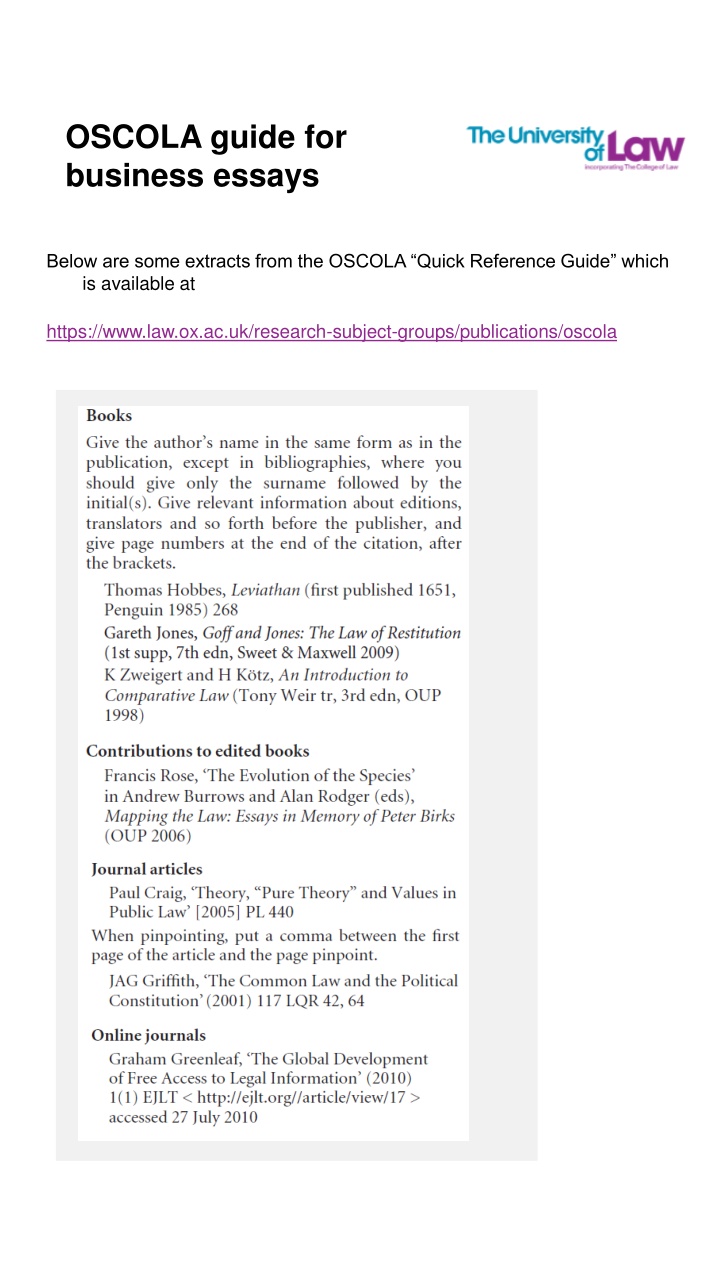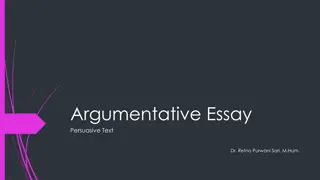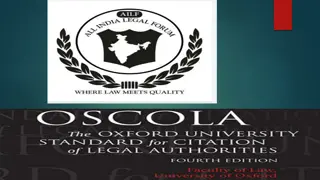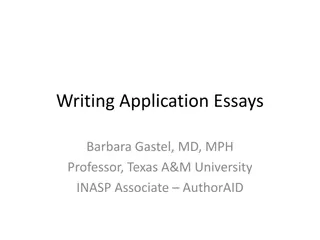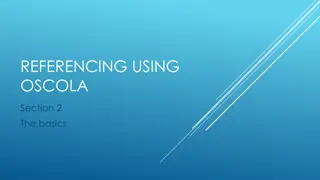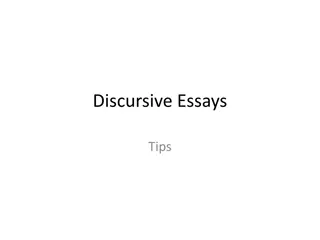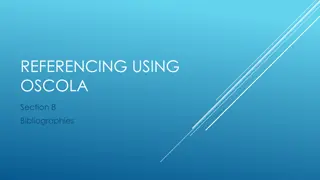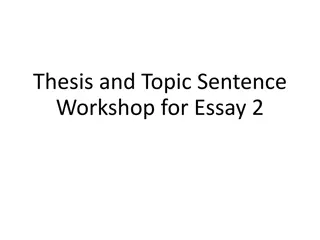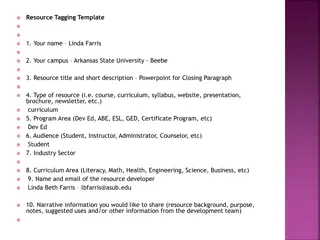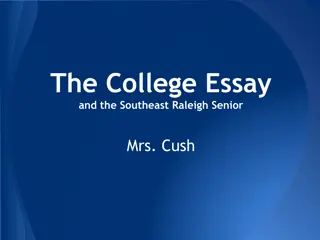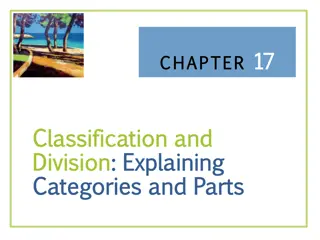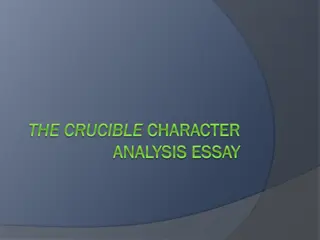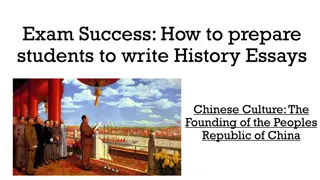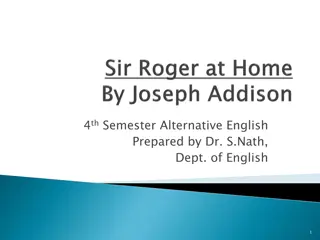OSCOLA guide for business essays
Extracts from the OSCOLA Quick Reference Guide providing guidance on the use of footnotes and bibliographies in business essays, including formatting rules for citations, book titles, journal articles, author information in footnotes and bibliographies, and more. The guidelines cover aspects such as book titles in italics, journal article titles in single quotes, page numbers, author formatting, and listing works alphabetically in bibliographies.
Download Presentation

Please find below an Image/Link to download the presentation.
The content on the website is provided AS IS for your information and personal use only. It may not be sold, licensed, or shared on other websites without obtaining consent from the author.If you encounter any issues during the download, it is possible that the publisher has removed the file from their server.
You are allowed to download the files provided on this website for personal or commercial use, subject to the condition that they are used lawfully. All files are the property of their respective owners.
The content on the website is provided AS IS for your information and personal use only. It may not be sold, licensed, or shared on other websites without obtaining consent from the author.
E N D
Presentation Transcript
OSCOLA guide for business essays Below are some extracts from the OSCOLA Quick Reference Guide which is available at https://www.law.ox.ac.uk/research-subject-groups/publications/oscola
OSCOLA guide for business essays Below is an extract with notes about the use of footnotes and bibliographies For more detail, google OSCOLA or go to https://www.law.ox.ac.uk/research-subject-groups/publications/oscola For Bettridge and Whiteley, the organisation is more like an organic brain than a single, simplistic entity that can be engineered .1 Restructuring will not necessarily result in improved performance. Approaches that emphasise optimal decision making,2 process mapping 3 and are well established globally. text Contains minimal citation information 1. Neela Bettridge and Philip Whiteley, New Normal, Radical Shift: Changing Business and Politics for a Sustainable future (Gower 2013) 60. Marcia W Blenko, Michael C Manko and Paul Rogers The Decision Driven Organisation (2010) 88(6) Harvard Business Review 54. Frank Cohen Lean Six Sigma (2014) 91(3) Medical Economics 64. footnotes Book titles in italics No place of publication for books 2. Journal article titles in single quotes Page number at the end with no p. 3. bibliography Works listed alphabetically by author surname Cohen F, Lean Six Sigma (2014) 91(3) Medical Economics 64 Book (OUP 2015) Bookette (publisher 2016) Dove, A Book (publisher 1999) Eagle, P My Opinion (Hart 1989) and Spa, C Bird (Oko 1990) Works by the same author listed chronologically If two works in same year, then order alphabetically by title
OSCOLA guide for business essays Focusing on author information For more detail, google OSCOLA or go to https://www.law.ox.ac.uk/research-subject-groups/publications/oscola For Bettridge and Whiteley, the organisation is more like an organic brain than a single, simplistic entity that can be engineered .1 Restructuring will not necessarily result in improved performance. Approaches that emphasise optimal decision making,2 process mapping 3 and are well established globally. Authors in footnotes Don t convert firstnames to initials in footnotes (unless the name is initialised in the original). No full stop after initials Surname does NOT go first in footnotes 1. Neela Bettridge and Philip Whiteley, New Normal, Radical Shift: Changing Business and Politics for a Sustainable future (Gower 2013) 60. Marcia W Blenko, Michael C Manko and Paul Rogers The Decision Driven Organisation (2010) 88(6) Harvard Business Review 54. Frank Cohen Lean Six Sigma (2014) 91(3) Medical Economics 64. Omit postnominals Limit to first three authors use and others for the rest 2. 3. Authors in bibliographies Surname first and initial with no comma in between Cohen F, Lean Six Sigma (2014) 91(3) Medical Economics 64 Book (OUP 2015) Bookette (publisher 2016) Dove, A Book (publisher 1999) Eagle, P My Opinion (Hart 1989) If more than work by an author use double em-dash for subsequent works
OSCOLA guide for business essays ...and finally a few more details. For Bettridge and Whiteley, the organisation is more like an organic brain than a single, simplistic entity that can be engineered .1 Restructuring will not necessarily result in improved performance. Approaches that emphasise optimal decision making,2 process mapping 3 and are well established globally. Measurement however is more controversial: Metrics and KPIs are one of the biggest and most damaging myths of management today. Half of the data is useless, the rest damaging. In the text, The footnote marker goes after punctuation and usually at the end of the sentence Short quotations are embedded in the text Longer quotations are indented and not in quotation marks. Abbreviations OSCOLA expects readers to know the abbreviations for well known legal sources, concepts and organisations. Others should be deciphered in the text or the footnotes. Mega footnotes are possible You are likely to see several sources to be cited in a single footnote if they relate to a single concept. Online sources If a source has an ISBN, cite it like a book. Generally, cite sources that do not have ISBNs in a similar way, but with the title in roman and within single quotation marks, as for journal articles Use specific publication date if appropriate If the source is only available online end the citation with the <url> and date accessed
